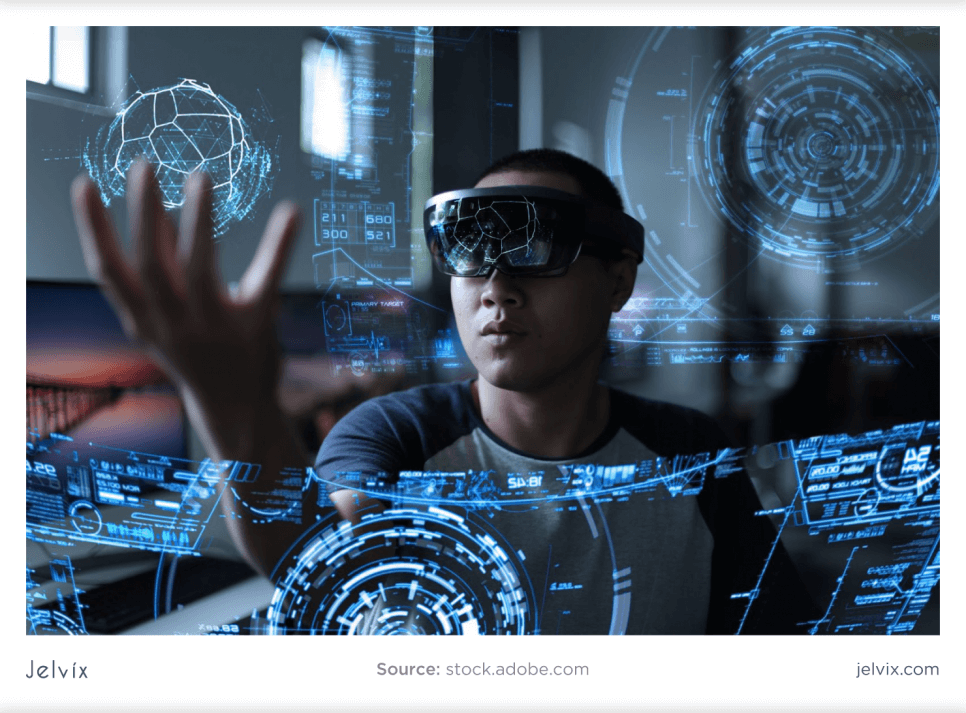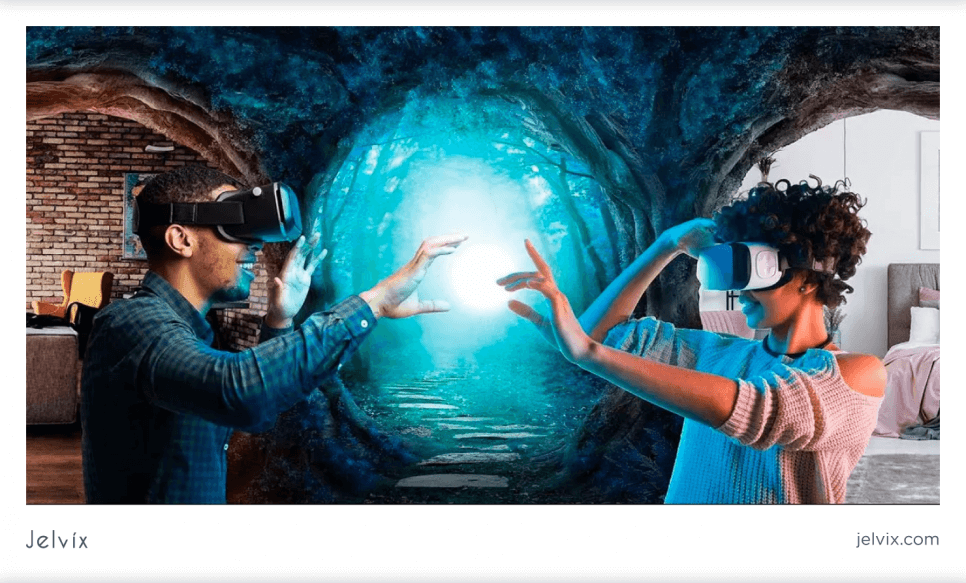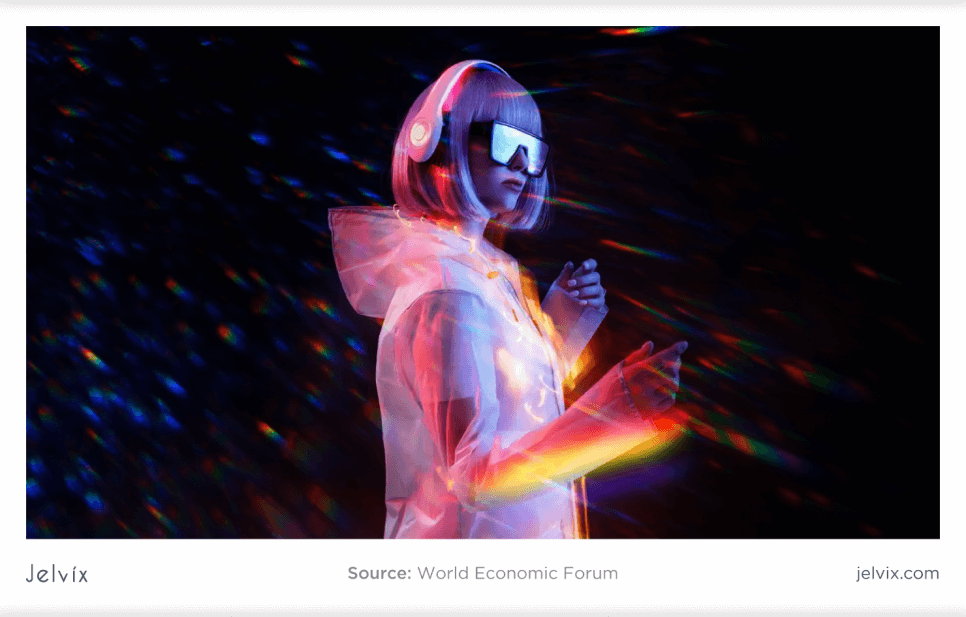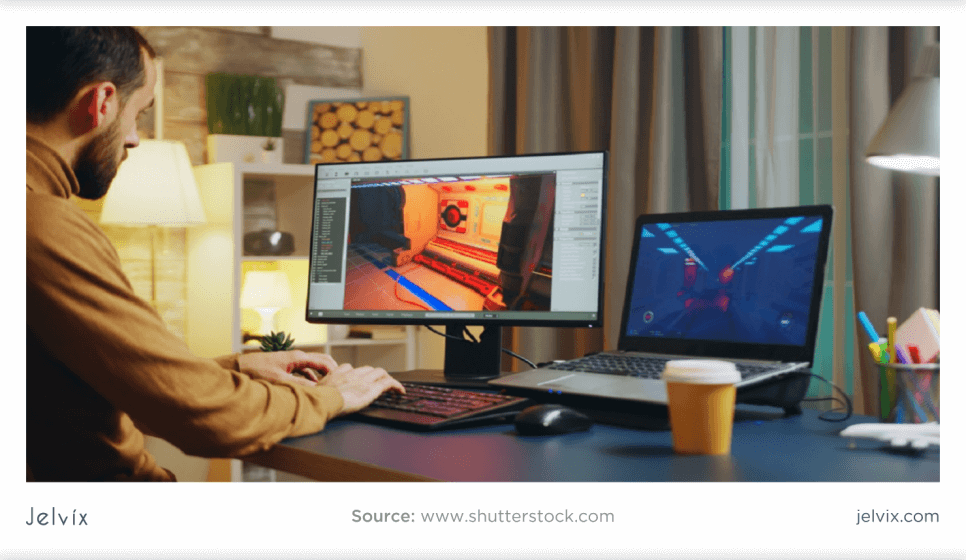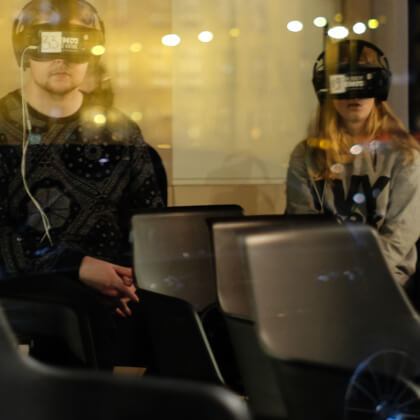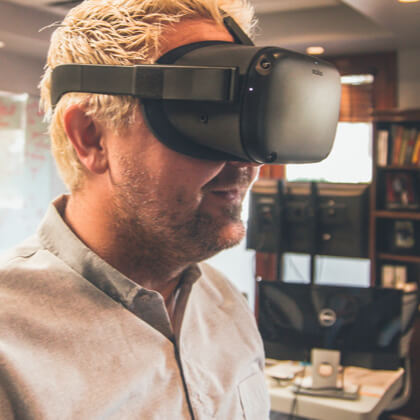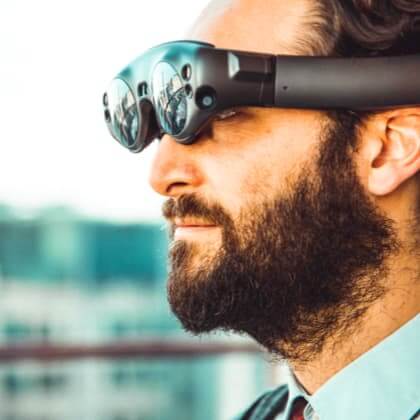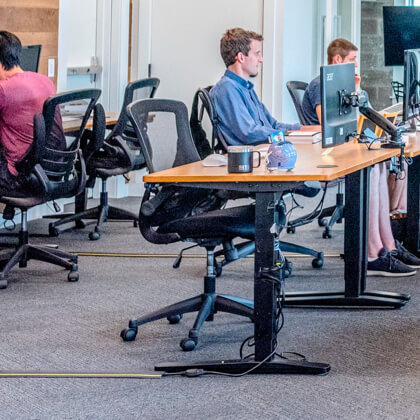The global virtual reality (VR) market is experiencing rapid growth – MarketsandMarkets predicts it will be valued at $44.7B by 2024, at a CAGR of 33.47%. 90% of the revenue will come from selling 14 million headset kits in 2023. The remainder, generated by the software market, will consist of virtual reality content — mostly games and enterprise applications — with revenues of approximately $0.7 billion.
But that’s not all. The demand will also be affected by the growing conjunction of wearables and augmented reality (AR). By 2024, 1.7 billion people are expected to use AR on their phones alone, according to Statista. It sounds like another big thing, doesn’t it?
These predictions inspire business owners across industries to utilize the benefits of a virtual reality world. Many wonder how to create VR applications and content that will attract potential clients and generate profit. If you are among them, then this article is for you.
What is VR software development?
Virtual Reality (VR) is one of the coolest technologies in software development. It is a 3D environment simulated by computer software that can be interacted with realistically.
To create 3D images and videos that replicate the real or imaginary world, virtual reality systems typically use computer vision and advanced graphics to add depth and reconstruct scale and distance between static two-dimensional (2D) images. It creates an immersive experience that makes users feel like they are part of the digital computing environment they are viewing.
To explore and control the 3D environment, users use computers and touch devices such as virtual reality headsets and gloves. With special lenses in the VR headset and sensor controllers, users can view and interact with virtual content naturally, just like in the real world.
What is Possible in Virtual Reality?
Virtual environments are useful because they are modified more easily than physical environments. Actions in virtual environments often allow users to accomplish tasks more quickly and cheaply than in a physical environment. According to virtual reality researcher Jeremy Bailenson, virtual reality is especially useful with:
- experiences that are expensive and accessible only to a small audience;
- experiences that are high-risk and dangerous;
- unusual events that people cannot experience in reality;
- experiences that are rare and cannot be easily replicated in the physical world.
Virtual vs. Mixed vs. Augmented Reality
Immersive VR technology often comes in tandem with augmented reality or mixed reality. To make sure these concepts are clear, let’s outline their differences.
- Virtual reality aims to fully replace reality with software that supports full coverage of the senses.
- Augmented reality superimposes computer-generated information into the natural environment, amplifying human perception and cognition through head-up devices, AR glasses, smartphones, or tablets.
- Mixed reality combines VR and AR elements to create new environments where users can co-exist and interact with objects in real time. In other words, the digital and physical worlds appear as one integrated 3D environment.
Extended Reality catch-all of real-and-virtual environments and includes aspects of Human-Computer Interaction. It is an umbrella term for AR, MR, VR, and other experiences, including sensors and wearables. It is also worth mentioning the “metaverse,” which means the digital world or cyberspace we can access through VR or AR.
Types of virtual reality
Many types of VR can offer different degrees of immersion. We’ll list the most influential ones:
Non-immersive virtual reality
It is a type of VR where users can interact with the virtual environment and control the movement of virtual objects on the screen to some extent. For instance, playing World of Warcraft, you control in-game characters that have their attributes. You are technically dealing with a virtual world but are not the central figure in action.
Semi-immersive virtual reality
Semi-immersive virtual reality delivers partial immersion by overlaying digital components on real-world objects. It has several advantages over full immersion systems, which include lower cost, easy-to-use, and logistics. But it also has drawbacks, such as a limited set of interaction devices and difficulties with multi-user applications.
Fully immersive virtual reality
Fully immersive VR provides a 360° sensory simulation for the user. Special equipment like smart glasses, treadmills, gloves, and sense detectors detect 3D data processed by VR software to create unprecedented virtual experiences. This type of VR is generally utilized for gaming and other entertainment purposes in VR quest rooms or even at home. Fully immersive VR makes it hard to differentiate virtual from real.
Benefits of VR Development for Businesses
Ten years ago, AR and VR technologies were incredibly expensive, and the market was almost nonexistent. But nowadays, 56% of organizations have implemented augmented or virtual reality in some form, and 35% are considering it. Indeed, technology offers many opportunities in the business space. Even if your company does not intend to enter the VR market directly, there are many ways that virtual reality can help your company.
Let's discuss which IT outsourcing trends will change the industry.
VR apps use cases
It is no hyperbole to state that the development of VR applications will define the future of next-generation businesses worldwide. Let’s examine industries where VR is making a breakthrough.
Gaming
Video games are the prime VR usage and remain the most accessible way for users to encounter the technology. Steam, the largest PC gaming marketplace, declares 2.5 million SteamVR users.
VR is now a mature technology supporting a durable, if niche, gaming scene. It has become an industry where small teams create amazingly visually rich games (like Stray) and easily distribute them through stores like Steam, itch.io, and Nintendo eShop. The game industry drives, but there are more use cases than games.
Marketing and retail
VR technologies immerse customers in digital experiences, allowing them to interact more meaningfully with business brands. Volvo, for example, leveraged VR to demonstrate the model XC90. Using the Volvo Reality app, users enjoy a virtual reality test drive and get a thorough look at the car’s interiors. Walmart employs an AI-powered virtual try-on technology for customers shopping online. Platforms like Decentraland allow purchasing virtual property and early access to the metaverse.
Product development
Virtual reality can significantly reduce the time between product design and commercial production by replacing the time-consuming physical prototyping with interactive virtual models. Watermark Products uses Manufacturing AR to visualize mock-ups and validate sizing for their products easily. Airbus, an aircraft and satellite manufacturer, chose Microsoft’s Azure Mixed Reality and HoloLens 2 to speed up the design and production of aircraft while boosting safety and functionality.
Training and Education
Virtual Reality transforms how people learn and teach, from providing in-depth knowledge and helping us understand complex subjects to facilitating language immersion and virtual trips. For example, NASA uses VR to train astronauts and technicians, plan missions, and simulate life on Mars. Solutions such as 3spin Learning allow training workers to use AR as a substitute for boring manuals and pictures.
Healthcare
Use cases for VR applications in the healthcare field are ultra-wide: from education that can expand patient engagement and medicine adherence to surgery simulations and clinical training. For example, the application HoloAnatomy teaches anatomy, and OssoVR helps hone surgical skills and allows training doctors who use robotic surgery systems. VR mobile app Mobius Floe provides as much distraction from pain as necessary.
Social
The number of Facebook groups related to AR/VR has increased exponentially. But virtual places where people can chat or collaborate were popular even before Meta announced Metaverse. Breakroom, Cluster, and Mozilla Hubs allow anyone to create immersive spaces for meetings and events.
What is Needed for Virtual Reality Software Development
Virtual reality app development requires strong expertise in various tools and techniques to reach the quality level needed for business success.
Technical requirements and tools
It includes software/hardware design that involves development environments, prototyping tools, frameworks, and libraries beneficial for VR app development.
SDKs and Platforms
The VR app development starts with choosing the platform and SDK. Software platforms such as Meta Store, SteamVR, Google VR SDK, and XboxVR are supported out of the box. That means no additional software needs to be installed for the experience, and users can be assured of consistent performance.
Game engines
A VR engine (usually a game engine that supports VR) runs on top of a VR platform. They are mostly free, integrate seamlessly with platform-specific SDKs, and are highly customizable through various APIs. Nvidia’s Havok, Unity’s Game Studio, Gear VR’s Unreal Engine, and Unity3D are examples of game engines and their many proprietary counterparts.
WebVR and WebGL frameworks and libraries
WebVR is a bit of JavaScript that runs in a web browser and affords an API for virtual reality applications. WebVR allows you to experience VR in most modern browsers. WebGL, in turn, allows your application to display graphics in the browser.
Design and prototype tools
To develop a great VR app, the development team should consider building a VR prototype for testing and validation purposes using the following tools:
- Cinema 4D (3D modeling, simulation, animation, and rendering software solution);
- Google Blocks (tools for creating 3D objects in virtual reality);
- Photoshop (CC 2019 or above for editing and compositing to digital painting, animation, and graphic design);
- VR Sketch (extension for SketchUp to create, edit and view models in VR);
- A-Frame (web framework for building 3D/AR/VR experiences), etc.
Hardware
You need proper hardware to run those immersive environments when developing a VR application. Unfortunately, this often means solid investing. In addition, there are several types of VR equipment, including the following:
- Computer, сonsole, workstation or smartphone;
- Mobile, standalone, or connected to a PC VR headset;
- VR haptic feedback suits;
- Input and output devices and more.
Challenges of VR Development
Key development concepts in VR revolve around locomotion, comfort, interaction, and optimization. Although these are constantly evolving, VR development still has issues that need to be remedied before becoming mainstream.
Public interest
VR is simple to market to “gamers,” but the public does not commonly regard it as a viable product. One of the top reasons is that many people need to learn what VR can do. However, this obstacle can be overcome by marketing and creating awareness of virtual reality and its technologies.
Latency issues
A major challenge in the VR market is to overcome latency issues between signals sent and received by VR software and hardware. Users want a smooth experience, and latency issues negatively impact VR UX.
3D mapping
Some tasks do not have a built-in 3D view, making them difficult to display in VR. As you can see from Immersion, 2D maps can be rendered in VR, but the code doesn’t have a third dimension and therefore loses the expressiveness of 3D.
VR sickness
Virtual sickness is a new term that describes the negative physical effects some users experience. VR works best at 90+ frames per second (FPS), with 60 FPS being acceptable on mobile. These frame rates are really hard to achieve in an immersive environment. But messing them up is not an option. It not only leads to a bad experience but can also mean users with nausea, dizziness, disorientation, eye strain, and motion sickness.
Graphical limits
As for such an old technology, it still needs to be improved in its GUI. Most of the VR graphics are comparatively worse compared to all existing consoles. Game physics is almost non-existent on virtual reality platforms. Given that the size of the software itself is a disadvantage, this is poor from a business standpoint.
Price
One of the major obstacles regarding doing business in the VR segment is the price tag of the whole affair. A basic virtual or augmented reality e-commerce development can cost $25,000, which is not the limit. The other part of the issue is headsets. Most consumers consider some of the gear very costly. For example, let’s take the HTC Vive Pro 2, which costs $1,583, and Valve’s Index VR Kit, which costs $1,799.
However, there is an upside. Despite the lack of commercial gain, VR content developers have time to grasp techniques better to deliver the goods when the demand starts to grow.
How and who creates VR content?
Software development companies are already at the forefront of improving and distributing VR technology. No matter the industry, the VR application development process follows a similar path.
- Step 1: Define the app concept and goal;
- Step 2: Choose a platform, SDK, and an appropriate engine and hardware;
- Step 3: Design and prototyping;
- Step 4: Development;
- Step 5: Testing;
- Step 6: Distribution and monetization.
At each stage, there must be several tech professionals involved. Sometimes even sound engineers need to create a fully immersive experience.
To get the performance and level of detail needed to create a high-quality experience, all of these people need to have years of experience in 3D development. The trick is to start with a core team of tech experts and designers and rely on their experience to bring other skill sets to bear at the right time.
Where to begin?
360-degree video is the starting point for many companies. This is generally the cheapest to produce and can be exciting if done right. Also, with the introduction of stereoscopic cameras, you can add depth to the experience that a regular 360 lacks. Unfortunately, that content type creates a passive user experience and will never make such a level of presence and immersion that a full VR experience can.
At the next level, we see interactive 360-degree videos. They are nearly identical to regular 360 content. Still, a layer of interactivity is added on top of the video to create a “choose your own adventure” type navigation or provide ways to get more information about what’s going on in the video.
A full VR experience is more expensive to create but provides the most immersive and interactive experience. This is the current gold standard of virtual reality and the reason for its recent success.
The cost of this type of development should come down as new technologies and methods are introduced. In particular, technologies based on photogrammetry and LiDAR promise a future in which photorealistic 3D models can be created at an affordable cost.
For example, let’s take an app developed by Jelvix to help art, furniture, and other product sellers present their goods in augmented reality. We focused on creating a new customer experience and enabling advertisers to use LiDAR technology in marketing campaigns. The idea was to make this process as simple as using a mobile device to create top-quality custom 3D models.
App users can scan any object using the iOS device’s LiDAR technology, selecting the quality options – SD or HD, preview the download, or share the scanned objects via email. Also, they can review a scanned object in augmented reality from different angles and pick better ones for editing.
The costs of VR application development
It is crucial to understand that investments in virtual reality and hardware devices can be expensive, and only a few specialists have the right experience. Therefore, many companies that plan to develop VR content outsource development.
How to use the selected experts is the prerogative of the company. First of all, it depends on a budget of the organization and its existing IT capabilities. You can outsource virtual reality programming to a software vendor or opt for a flexible extended team model. The latter option entails hiring strictly those needed to enhance operational capability.
Conclusion
We are witnessing the spread of virtual reality into our daily lives as tech experts discover new ways to make virtual reality easier and cheaper. This innovative tool can give your customers a unique experience and uncover product value. For our part, we are here to help you.
We are one of the few software development companies with a proven track record of developing revolutionary VR products for our clients. With Jelvix, you choose the experience of developing virtual reality software for any specific situation according to your requirements. The potential of virtual reality will be get-at-able if you contact us.
Need a qualified team?
Reach new business objectives with the dedicated team of professionals.


